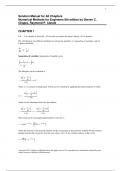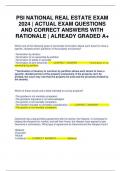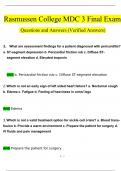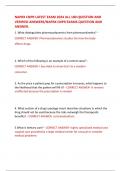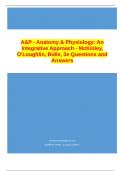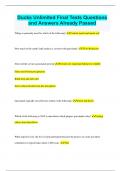Tentamen (uitwerkingen)
Solution Manual for Numerical Methods for Engineers 8th edition by Steven C. Chapra, Raymond P. Canale.
- Vak
- Instelling
- Boek
Solution Manual for Numerical Methods for Engineers 8th edition by Steven C. Chapra, Raymond P. Canale.
[Meer zien]
